


If you were looking closely at the video of the Adams Radial in last week's Engine Shed, you might have spotted the subject of today's announcement. We're pleased to announce that we are launching four Ex-LSWR 48’ Maunsell Rebuilt 58’ Coaches in 2016.
The coaches are due for arrival in August 2016, and are all available for pre-order from today. Please note, product photos are from initial stereo samples of the coaches, more detail will be unveiled as the project develops.

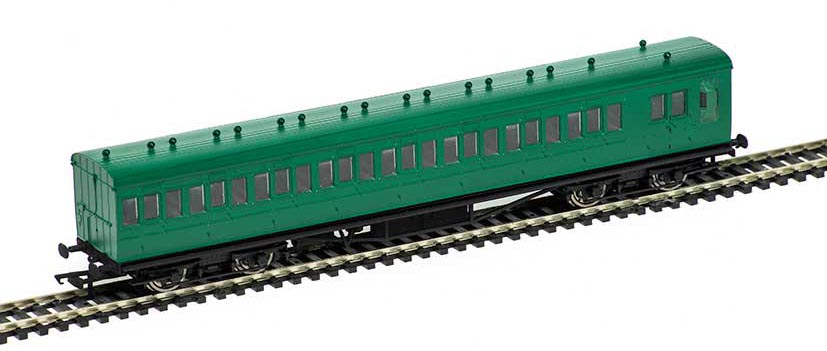

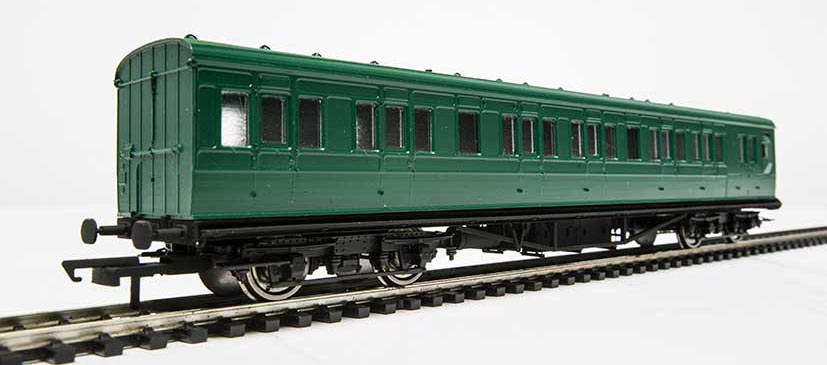
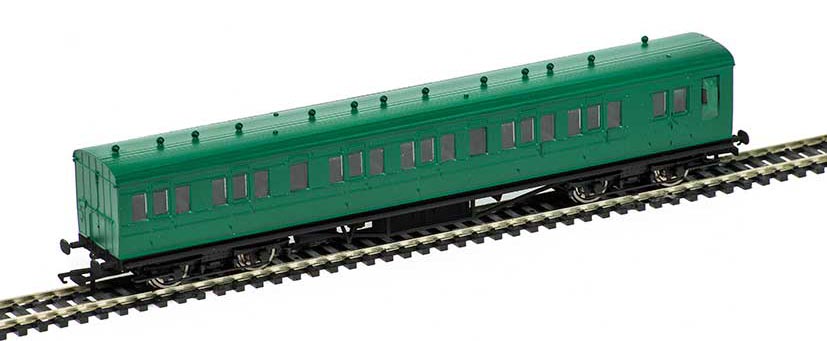


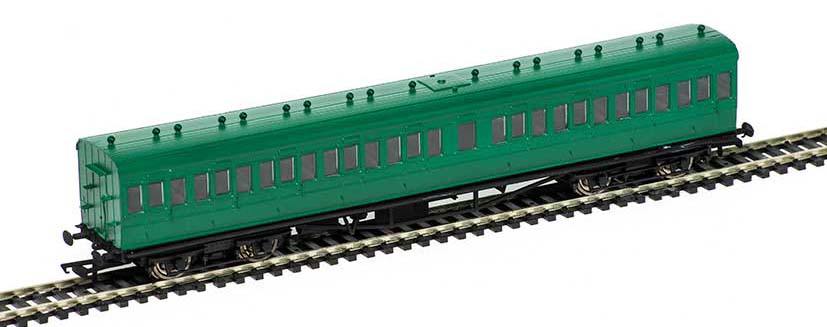

By 1934, the Southern Region recognised that the short 48’ ex-LSWR stock was in need of some major attention as it was nearing the end of its working life. Much of it was built on wooden underframes, whilst some was still gas lit and so a programme of refurbishment was proposed and undertaken under Works Order (HOO No.) L801 of March 1934 and Works Order (HOO No.) L852A of March 1935.
The 58’ stock to diagrams 99 and 418 were created in 1935/1936 at Lancing Works, by taking the 48’ Composite body, cutting it and fitting to a 58’ Maunsell underframe. In the case of the Brakes, a 10’ guards van was grafted to one end, these were steel panelled, which didn’t quite match the finish of the rest of the wooden panelled bodywork. The composites (to diagram 31) differ, in that the original 48’ body was cut into two sections and mounted at each end of the underframe, with a 10’ section being inserted comprising a single compartment, with two lavatories (side by side). The defining feature of all these ‘new’ vehicles was the triangular section weatherboard that ran the length of the body, disguising the join (the 48’ body being narrower than the 58’ underframe).
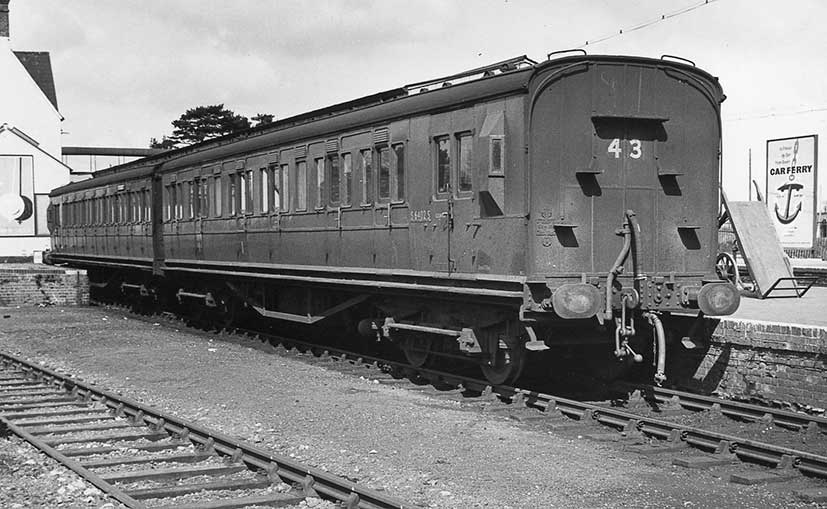
Image Mike King - Set 43 at Sidmouth Junction on 8th April 1958
The differences between Diagram 98 and Diagram 418 are just decorative, being the lack of First Class seats and the Class markings on the door. Running as loose stock, the D98s would’ve been tacked on to the front, or rear, of any train, anywhere on the Southern region. Later some were formed in long sets of up to nine coaches with either other LSWR vehicles (sometimes corridors, sometimes not), or SECR "birdcage" stock until about 1959/60.
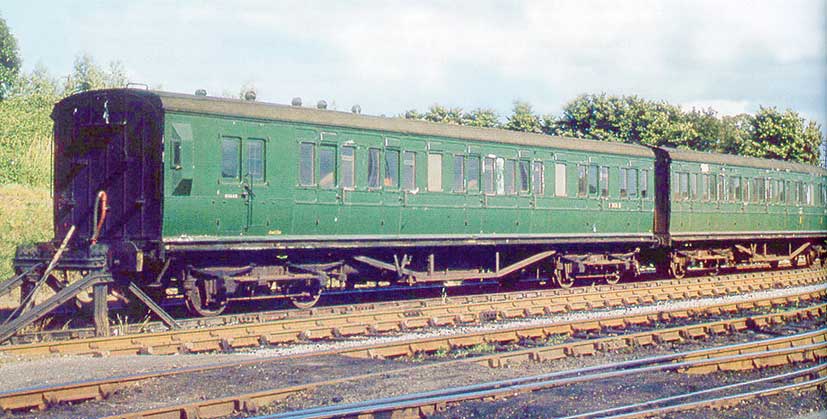
Image Mike King - Coach S2626S at Evercreech Junction in July 1958 - most certainly green with BR Gill Sans insignia. Coach 2626 was formed in set 51 with brake composite 6474. The latter was taken for preservation in 1948, leaving the brake third to run as a loose coach until withdrawn in 1959
58’ Coach Sets were used in conjunction with the Adams Radials on the Lyme Regis Branch, as well as other West Country Branch Lines. Comprising five, 2-car sets, (Nos. 42-46), these were the only all Maunsell 58’ sets formed (there were, however, there an additional 5 carriages under Diagram 98 that were identical to the Diagram 418, 6 compartment Lavatory Composite Brakes). These were coaches 2625 to 2629 and they were formed into 2-car sets (Nos. 51 to 56) and paired with shorter 56’ Lavatory Composite Brakes.
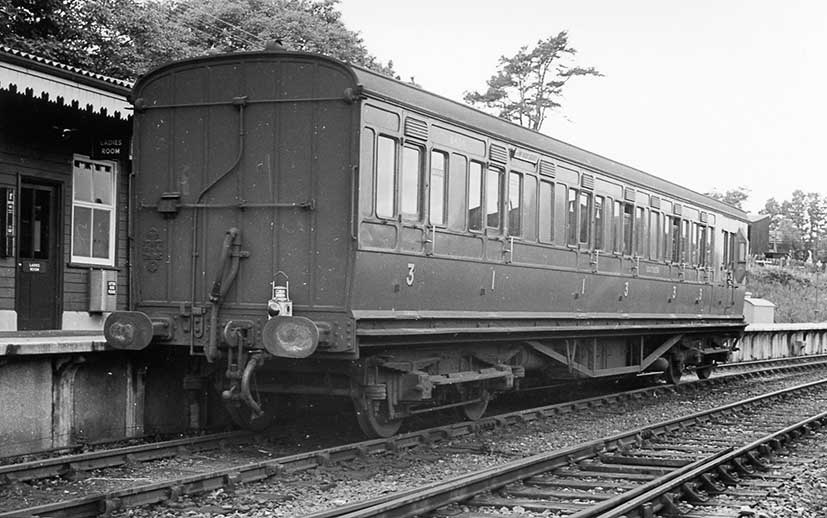
Image Mike King - Coach 6404 at Lyme Regis in June 1948 in full Southern Malachite
Apart from the Lyme Regis Branch, which always called for one of the 42-46 sets (any one, so all may have appeared there over a period of time), the D99/D418 coaches would have operated on any of the following services (this comes from the October 1945 carriage working notices):
• North Cornwall and Bude lines from Okehampton.
• Exeter to Exmouth (with other coaches coupled).
• Exmouth to Tipton St Johns to Sidmouth/Sidmouth Junction.
• Exeter to Sidmouth Junction to Sidmouth.
• Padstow to Wadebridge to Bodmin.
• Exeter-Honiton and Axminster main line locals.
• Barnstaple to Torrington.
• Salisbury to Wimborne to Weymouth.
• Salisbury to Semley school train
• Salisbury to Amesbury to Bulford.
• Gosport to Fareham.
• Exeter Central to Plymouth Friary (front portion of a 5-coach train).
• Christchurch to Bournemouth to Swanage locals.
• Eastleigh to Andover Junction.
• Dorchester to Weymouth locals
There were 29 duties in total for all of the thirty four 2-car sets and all were fully interchangeable, so any set from numbers 7-21, 42-46, 51-54/56, 57-62, 127, 128, and 132 could be used. Likely motive power would be T9, Maunsell ‘U’ Class Mogul or M7, as well as the Adams Radial on the Lyme Regis branch, with an Adams O2 between Bodmin and Padstow. There was also one Saturday duty on the Seaton branch for the Radial, on changeover day, as the loco ran either to or from Exmouth Junction. Use of a Radial on the Exmouth branch was also not unknown. There is evidence of a Drummond LSWR 700 0-6-0 on one of these sets at Bulford Camp Station on the Amesbury & Military Camp Light Railway, as well as anecdotal reference to a Merchant Navy locomotive hauling one of these sets, plus other coaches, between Barnstaple and Ilfracombe and between Exeter and Plymouth. Set 46 ended its days on the Clapham Junction to Kensington Olympia service in 1958, but with three ex-SECR 60ft thirds coupled between the brake coaches.
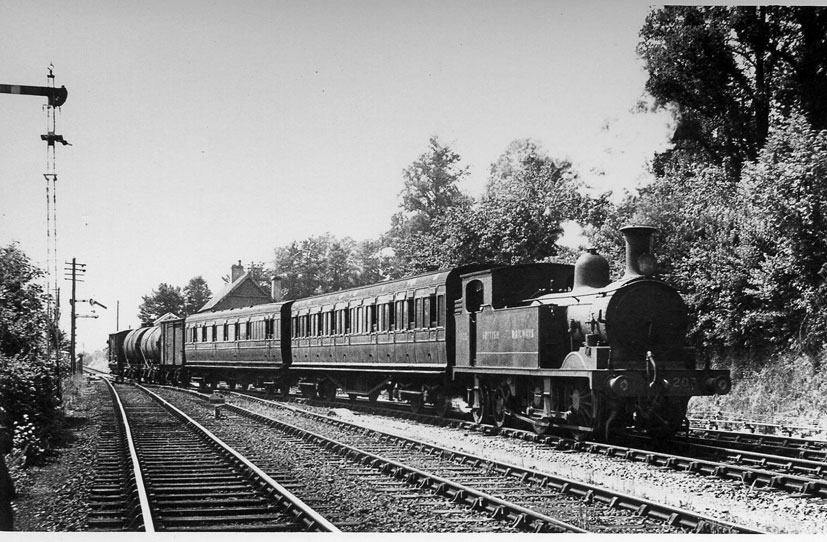
Image Mike King - Wadebridge-Bodmin mixed train at Boscarne Junction about 1950 with O2, Diagram 31 third, corridor brake composite and wagons
Individual coaches were specifically listed in carriage working notices as being allocated to certain workings during the 1950s, those referenced specifically are coaches 169, 304, 326 and 513 at Hayling Island between 1955 and 1959. Coaches 194, 204, 267, 284, 329 and 360 were allocated to London Central/London East divisions in 1957-59 (so likely to be seen on the Oxted line as well as other Surrey/Sussex/Kent locations), whilst 187, 225, 253, 313, 320, and 364 were allocated to the Southern operating district during 1957-59 (Eastleigh, Southampton, Bournemouth etc). Prior to 1957 they were all just listed as loose coaches, but no allocation given.
There were also some type 'E' 4-sets on the Exmouth Branch in the 1950s, these were a 2-set (which could be one of 42-46) with a pair of thirds attached, either within the set or at either end. Two ended their days on the Lancing Belle workman’s train in 1964 and these were the last survivors. Coach 320 went to the Bluebell and was repainted blue, running with Maunsell coach 6575 and Stepney.
It was to the Bluebell Railway that we went on a research trip, investigating the rather weary remains of Coach 320 to take what measurements and observations that we could. Thanks must go to Rowan Millard at the Bluebell Railway’s Horsted Keynes C&W depot as, despite being hugely busy, every assistance was rendered to us. We’d also like to thank Mike King for his assistance in providing archive photography of the four Diagram types, as well as information on the Carriage Working Notices.

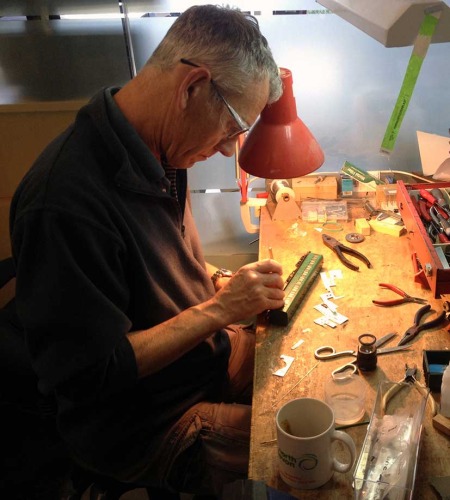
There's still some development work to be done on the Maunsell coaches - tooling has now started and we expect First Shots and Engineering Samples before mid September. We'd love to hear your initial reactions - let us know on Twitter or Facebook with #HornbyEngineShed, or on The Engine Shed Forum.
Happy modelling!
The Engine Shed Team
© Hornby Hobbies Ltd. All rights reserved.